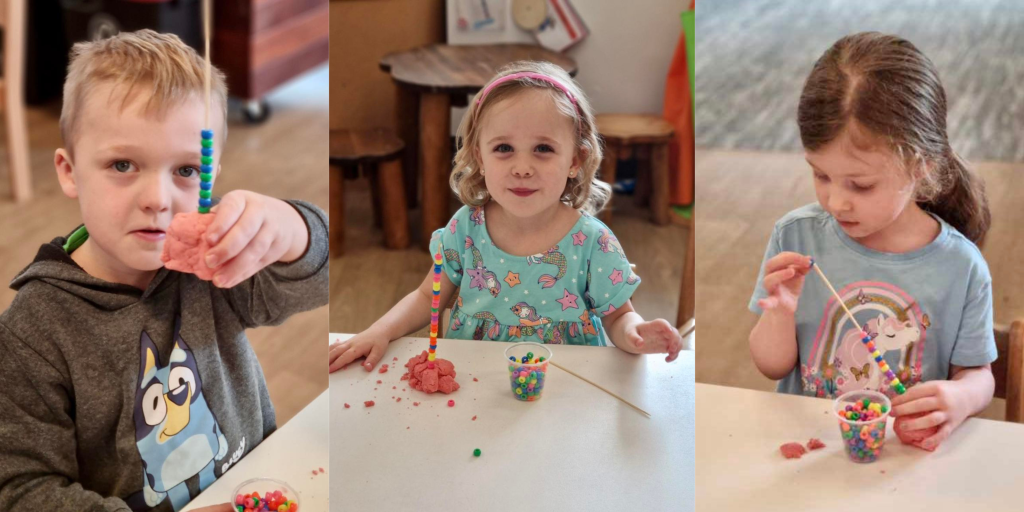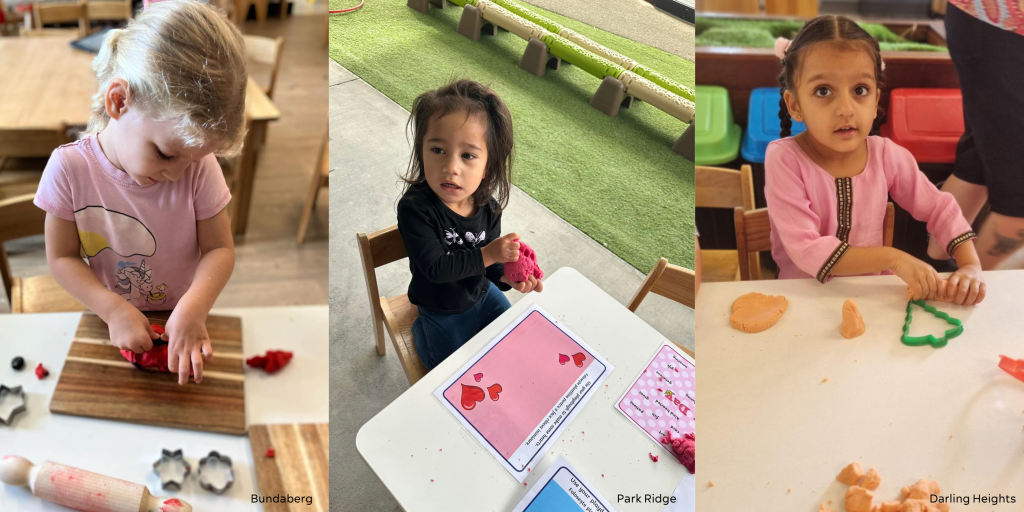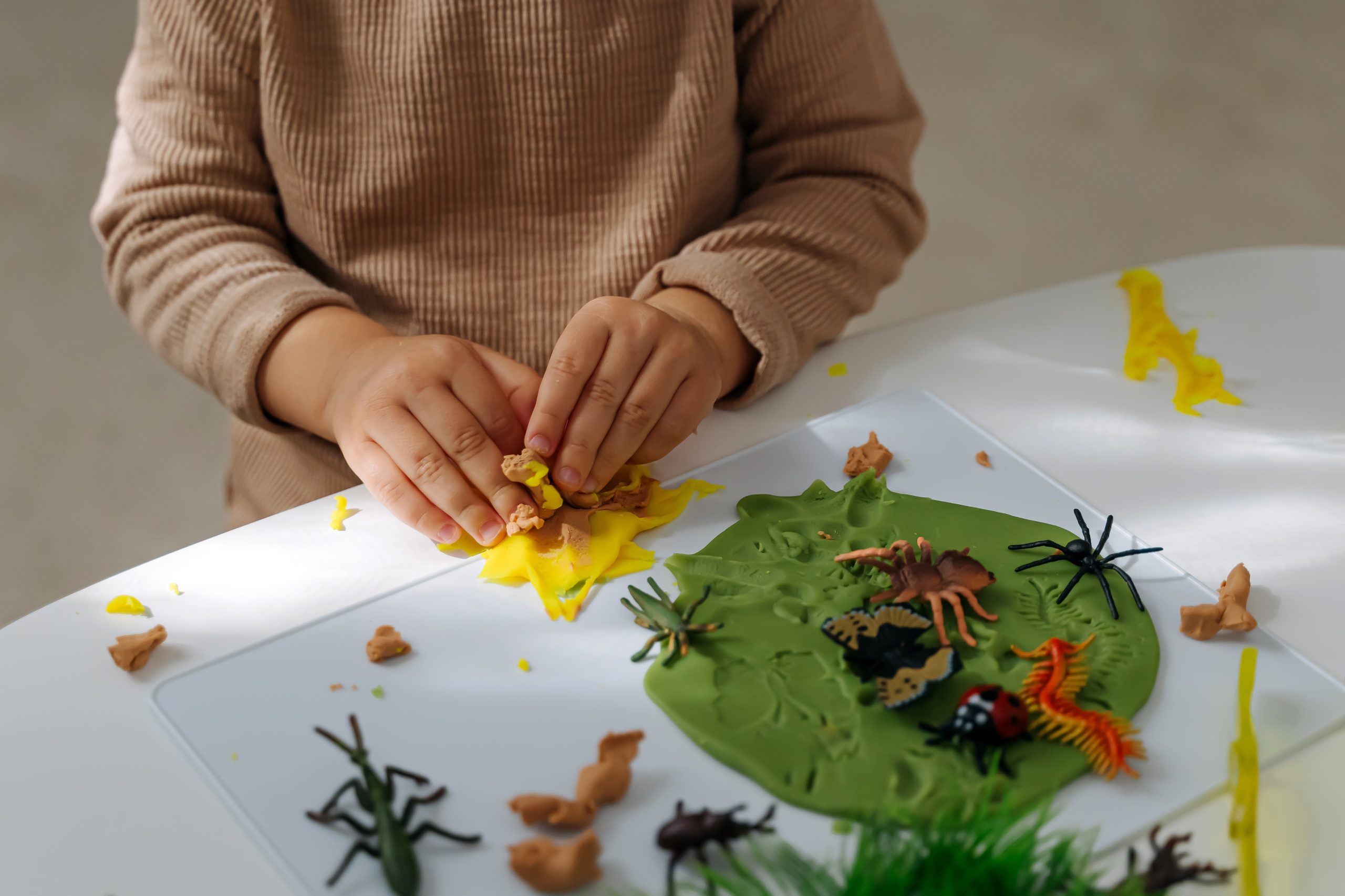Play dough has been a staple in an early childhood setting for decades and there is a good reason why! Play dough is a great tactile resource, holding a number of benefits including encouraging creativity in Kindergarten, boosting fine motor skills in Junior Kindy, and discovering new senses with Toddlers.
As an incredibly loved resource for both children and Educators, play dough is often used for free play time and scheduled learning activities. During this blog, we will be sharing the many ways we find joy in using play dough across our Grow Early Education centres and share some insight on how you can replicate our play dough recipe and learnings in a home setting.
How to make your own home-made playdough!
What is needed:
Measuring cup
Mixing spoon
Tbsp
Mixing bowl
1/2 cup table salt
1 tbsp of oil
Food colouring
1 cup of flour
2 Tbsp cream of tartar
1 cup of water
Instructions:
- Combine flour, salt, and cream of tartar together in a bowl.
- Mix well with mixing spoon.
- Add in the oil and mix together.
- Add food colouring and water together in a separate bowl.
- Once the colour has spread in the water then add the now coloured water into the other bowl combining all ingredients together.
- Mix all ingredients together with a mixing spoon.
- Once the mixture becomes firm use hands to mix and finish blending together - this will enable it to become more of a dough texture.
- Place on the table for the children to use.
Using this recipe as your play dough base, you can get creative and add your own variations to build on the sensory elements. Try adding a few drops of essential oils to discover new smells or add herbs to further develop the sensory aspect of texture and touch.
Across our Grow Early Education centres, there are a number of ways that our Educators incorporate play dough into our educational programs.
- Pattern Reognition
The Kindergarten children at our Grow Early Education Darling Heights centre used play dough as the base to their pattern making as a part of their introduction to pattern recognition. Pattern recognition in early childhood education refers to the ability young children have in identifying, understanding, and predicting sequences in their environment. It is a fundamental skill that lays the ground work for more complex problem-solving and mathematical solutions.
By adding the element of play dough and beads to this task, they are working on their fine motor skills, pincer grip skills, and hand-eye coordination.

2. Indigenous Culture
The Toddler children at our Grow Early Education Riverton centre learnt about the temporary shelters traditionally used by Australian Indigenous Peoples as a part of the Toddlers introduction to Aboriginal and Torres Strait Islander cultures.
This by utilising play dough in this activity, it allowed the children to learn in a more hands-on way, while also encouraging further development of their comprehension, hand-eye coordination, and fine motor skills

Our Educators often use play dough as a learning resource on significant and special days happening across the country.
Grow Early Education Bundaberg created their own versions of poppies as a part of the ANZAC Day learning, this is a great way to encourage inquisitive thinking as the children ask questions about the significance of the flower.
Grow Early Education Park Ridge used their own play dough recipe to create heart-shaped decorations as a part of their Valentines Day celebrations.
Grow Early Education Darling Heights used orange play dough to create different shapes as they celebrated Harmony Day across their centre.

4. Educational Programming
Grow Early Education Bundaberg used play dough to create blue birds nests as a part of their discussions on the Bowerbird Blues book that was this year's pick for National Simultaneous Storytime.
This activity allowed the children to discuss certain parts of the book they enjoyed with their peers, while also talking about what they know about birds and their nests.

By making your own play dough, you provide a wonderful sensory experience for children and also create lasting memories through shared activities. We hope this guide inspires you to experiment with different textures and colours, and most importantly, to have fun. Stay tuned for more exciting tips and ideas to enhance your playtime adventures.
Find your own printable version of our home-made play dough here!
We would love to see your at home play dough creations, tag us in your creativity on Instagram @grow_early_education or on Facebook @growearlyeducation



